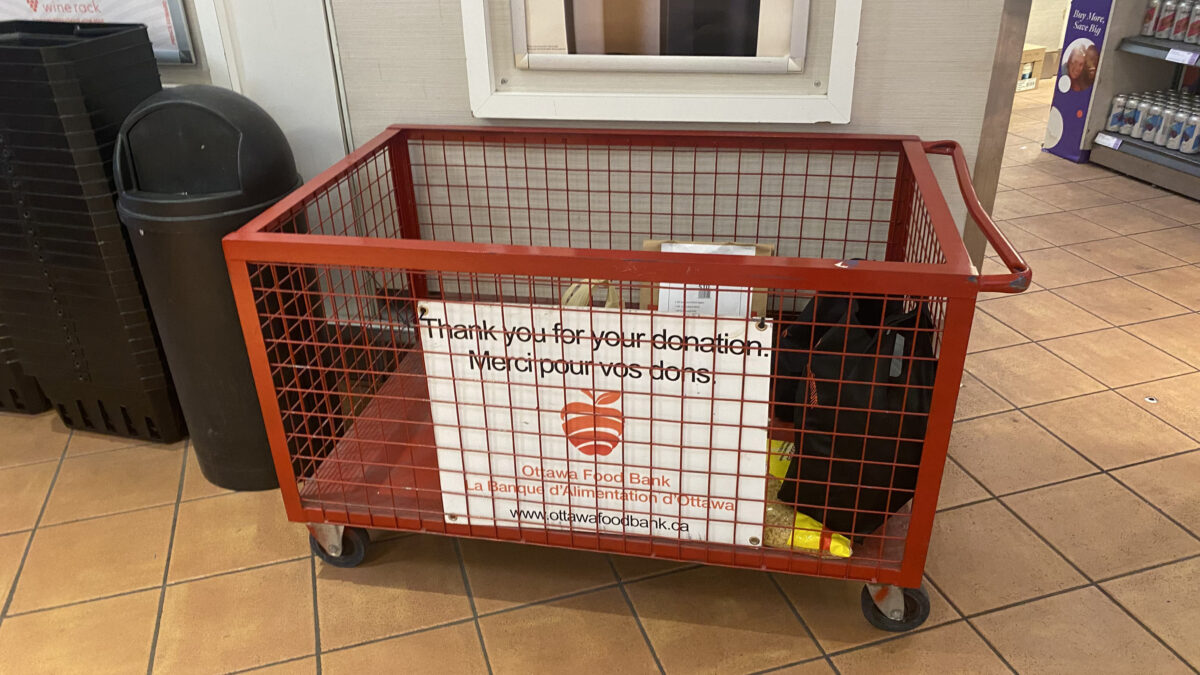As prices soar, Ottawa food banks say they are facing demand for their services growing at never before seen rates.
In the last year, food prices in Ontario have increased 6.3 per cent, 6.8 per nationally, according to the most recent figures released by Statistics Canada.
“The centre has been open since 1988 and we’ve never seen numbers like this in our history,” said Chad Chartrand, the communication and fund development coordinator at the Orléans-Cumberland Resource Centre.
“In the last year, we’ve seen an increase of 30 per cent of individuals coming to our food bank for help. And in the last two years, I’d say it’s about a 50 per cent increase,” said Chartrand.
FAMSAC, an organization that provides emergency food assistance in Ottawa’s west end, has seen the same increasing need.
“I would say we haven’t seen this level of need since the late 1990s,” said Erin Coffin, a board member of FAMSAC.
“People don’t usually think of the suburbs as a place for people who are in need or for people who are struggling to pay the bills. The need for help and the need for social services like food banks is everywhere, and it is definitely needed in the suburbs,” said Coffin.
For Alain Cyr-Russo, senior manager of student life at Algonquin College, the school’s partnership with the Ottawa Food Bank has helped ensure that Algonquin College’s food cupboard stays stocked.
“Having to buy more culturally specific foods is where we’ve seen mostly an increase because there’s obviously an influx of international students,” he said.
“We’re trying to find more cultural foods and the increasing prices of everything has obviously affected everyone.”
A report released by Food Banks Canada last month highlighted the growing demand besieging food banks across the country. The report scored each province and territory on their poverty reduction efforts. Ontario received a ‘D-‘ on Food Banks Canada’s inaugural poverty report card, placing the province below the country’s overall low score of ‘D+’.
“We want the government to step up and address the root causes of poverty,” said Samantha Koziara, the communications manager at the Ottawa Food Bank, in an email to Capital Current.
In 2022, there was a 28.8 per cent increase in food bank usage across Ottawa, according to Koziara. This amounted to more than 400,000 total visits.
“Hunger does not exist in a silo — hunger and increased food bank usage is a symptom of poverty and an indication that there are large issues that need to be addressed. Food banks can’t be expected to continue to fill the gaps left by unacceptable government policy,” Koziara wrote.

Supporting food banks
Ottawa food banks credit community members for helping address the increasing need.
“We’ve been putting out a call to the community for help to get donations for our food bank and they’ve definitely responded,” said Chartrand.
“I think the best thing that people can do is donate to our centre. Either with a food donation or monetary donations, particularly monetary donations go a long way,” he said.
“I have seen people come back who used to need the support of FAMSAC and would come regularly for emergency food help,” said Coffin.
“And once they have gotten into a better situation, they have money to contribute.”
Coffin says that she encourages Ottawa residents of all ages to get involved in giving back to the community.
“If people are in the grocery store with their kids, get your kids to help you choose something to put in the local food bank basket or donation bin,” she said.
“We always encourage individuals to donate and donate regularly. Charities usually make most of their fundraising goals in the last quarter of any year, usually around Thanksgiving and Christmas, but we also really appreciate regular donations, if possible,” said Coffin.




